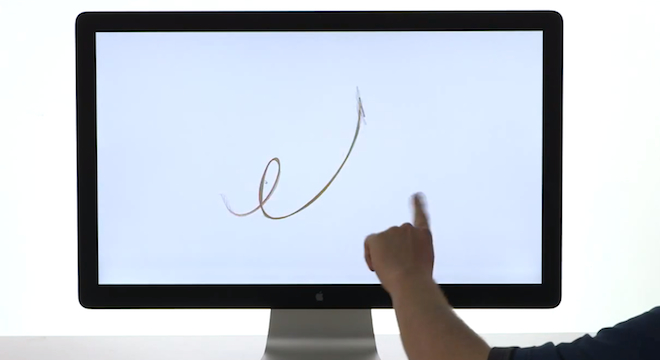In a few months, you may be not be clicking on this or any other article online, but instead gesturing in the air to navigate your way around the Web.
That’s the promise of Leap, a $70 motion control device for Mac and Windows PCs that was unveiled by the San Francisco-based startup company Leap Motion earlier this week.
The Leap, which is accepting pre-orders online, with an estimated shipping date between December 2012 and January 2013, is a small, USB device that its makers promise will transform the way you interact with your computer.
Instead of using the mouse or a trackpad, or even a touchscreen, Leap users will be able to simply move their hands in front of the screen, similar to how gamers interact with Microsoft’s Xbox Kinect system.
But Leap Motion claims that its device is “200 times more accurate than anything else on the market — at any price point,” and that “the ability to control any computer with nuanced hand and finger movements will fundamentally transform the way people interact with computers.”
See a video demo of the technology in action here, via Leap.
Leap’s grand ambitions are, not surprisingly, steeped in sci-fi lore, with the website making references to “Star Trek holosuites” and “Tom Cruise swiping through Minority Report’s 3D computer interface.”
Small wonder then that even without any physical products in the hands of customers, the Leap has already garnered considerable attention from tech reporters. Of course it helps that Leap also has the backing of huge Silicon Valley venture capitalists.
But not everyone is so taken with the new device. Microsoft, which turned the concept of “controller-free” gaming into a smashing success following the release of its Kinect camera and motion control interface for the Xbox 360 console in late 2010, effectively told Leap to “bring it on.” As a Microsoft spokesperson told TPM in a statement:
“With Kinect, Microsoft has defined a new category of human tracking and speech-at-a-distance, and competition is natural and expected in such an exciting space. We welcome new entrants — it helps awareness of the category and drive more developer interest and innovation. With Kinect, Microsoft offers an integrated solution which incorporates Microsoft’s broad set of capabilities- research, software, hardware, global presence, global partner network, developer tools and worldwide support network.”
It’s unclear if Microsoft has reason to be confident in the longstanding pull of its Kinect interface. The Kinect took the Guinness World Record of “Fastest Selling Consumer Electronics Device Ever” in 2011, selling 8 million units in its first 60 days. But in the 10 months after that, it only sold 2 million more units.
However, Microsoft has managed to retain interest of developers and hackers, slowly unveiling other tricks for Kinect. The company on Monday released a new version of its software development kit for Kinect for Windows computers, with improved facial recognition and body tracking detection.
Other companies, including Sony, have released their own motion controller devices, but none have been as successful on their own as the Kinect.
A major part of that success is explained by the fact that the Kinect’s motion-control camera and software can be easily repurposed by aspiring developers, software engineers and even scientists, which has quickly given birth to a thriving Kinect hacking community.
Microsoft was initially wary of Kinect hacks, but openly embraced them in late 2011 by announcing the Windows-specific version of the device a year after the Kinect’s initial release for the Xbox 360.
By contrast, Leap is seeking to have third-party developers on its side from the get-go, with the company pledging to distribute “thousands of kits to qualified developers, because, well, we want to see what kinds of incredible things you can all do with our technology. So wow us.”
One place where the Leap is already a clear winner is price: At $70, it is currently less than half of Microsoft’s full, up-front price of the $170 XBox 360 Kinect and a little more than a fourth of the price of the Kinect for Windows PCs, though, cheaper copies are available through secondary retailers.
Still, whether it be Leap, Microsoft or another competitor entirely, motion control technology appears to be headed to the consumer electronic device industry in a big way in the coming years.
At the Consumer Electronics Show in Las Vegas in January, Israeli company PrimeSense, the firm behind the Kinect’s motion sensor software, told CNET that it wants to bring its technology to all sorts of consumer devices. A late 2011 patent by Apple indicated that the world’s most valuable company is also interested in pursuing gesture-based controls. Microsoft itself has a whole research division dedicated to developing “natural user interfaces,” that do away with clumsy peripherals like the good old mouse. So maybe the company really isn’t concerned about yet another competitor.






